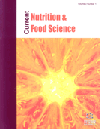
Antifungal and Antibacterial Activity of Propolis
Propolis is a natural substance collected by bees from local flora. Propolis is increasingly used in health-food manufacturing practices since in addition to the antibacterial, antifungal, and antiviral characteristics, it also strengthens the immunity and has a strong antioxidative effect. We investigated the chemical composition and antimicrobial activity of 10 samples of propolis, which were collected in different regions of Lithuania. The highest concentrations of phenolic compounds, the main active substances of propolis, were found in the samples which were collected from the hives located in the proximity of forests of a mixed type. The highest amounts of flavonoids were detected in propolis samples that were obtained from the bee hives located in the meadows All samples of propolis ethanolic extract were active against gram-positive, gram-negative bacteria and fungi. The antimicrobial activity was higher against gram-positive than against gram-negative bacteria. One propolis sample showed relatively strong activity against Candida albicans - minimum inhibitory concentration (MIC) - 0.009 g/100ml of phenolic compounds. The antimicrobial activity of propolis may be due to the synergistic effect of phenolic compounds, terpenoids, aromatic and aliphatic acids.
Keywords: Propolis; antibacterial activity; antifungal activity; chemical composition
Document Type: Research Article
Publication date: 01 November 2007
- Current Nutrition & Food Science publishes frontier reviews on all the latest advances on basic and clinical nutrition and food sciences. The journal's aim is to publish the highest quality review articles dedicated to research in the field. The journal is essential reading for all nutrition and food scientists.
- Editorial Board
- Information for Authors
- Subscribe to this Title
- Ingenta Connect is not responsible for the content or availability of external websites
- Access Key
- Free content
- Partial Free content
- New content
- Open access content
- Partial Open access content
- Subscribed content
- Partial Subscribed content
- Free trial content